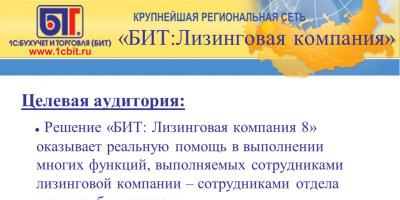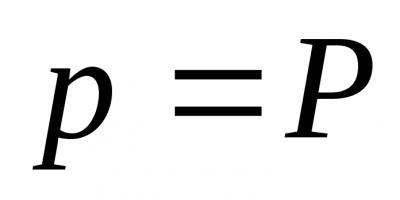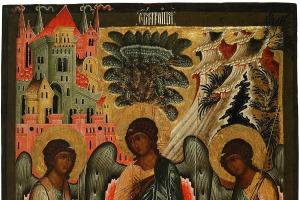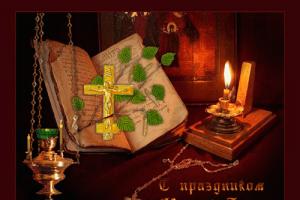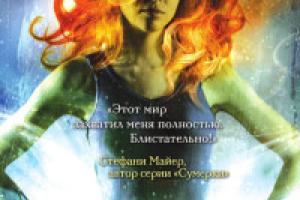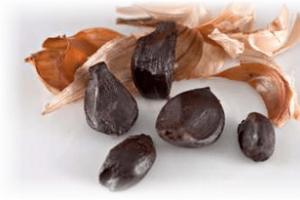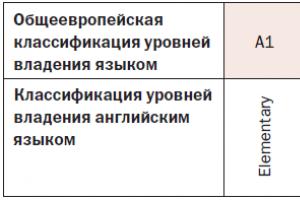Afanasy Afanasyevich Fet is a gifted poet and highly educated person, translator, publicist, memoirist.
Birth story
The talented lyricist was born in 1820. His father is a wealthy landowner, nobleman Shenshin, his mother is a divorced German woman, Charlotte Fet. The origin of the child is shrouded in mystery. He was raised as an heir, but at the age of 14, young Athanasius was declared illegitimate by the church and deprived of his title and fortune. Since that time, the collapse of hopes and the double position have significantly influenced the actions and character of young man. All his aspirations were one thing - to achieve the rank of nobility. For this reason, Afanasy Afanasyevich became a military man, knowing that a title was awarded for a certain rank of officer. But his hopes were dashed many times. Already in 1873, he - already rich and to an influential person, - the letter was entrusted and the father’s surname was returned.
Personal life
The path of the poet’s love was difficult and thorny. During his military service, he tragically lost his beloved, a girl who sincerely loved him. He dedicated many of his poems to her, both in his youth and in his more mature years: “Whisper, timid breathing”, “You suffered”, “Old letters”, etc.
In 1857, Fet married the wealthy, middle-aged Botkina, for whom he received a substantial dowry, which allowed him to buy an excellent estate and become a wealthy landowner.
The beginning of creativity
In 1840, Fet published his first collection of lyric poems, which loudly announced himself to the entire literary world of Russia. From that time on, the poet's works began to appear in famous magazines of the time.
The first attempts to write are filled with sensuality and romanticism. For the poet, fiery beauty and wild passion become the ideal.
Later, the author stops describing feelings and emotions, and turns to invisible sensations, shades, impressions.
Maturity of poetry
Instead of a storm of burning feelings - despair, aggression, the sweetness of love and being, Fet begins to sing of the simple - raindrops, snow flakes, the splash of waves, momentary impressions. The poetry of Afanasy Afanasyevich becomes not burning and hot, but light, calm, bright. He turns to stylistic laconicism and symbolism. For example, he compares the gliding of a steamboat through the waves with the bathing of an “evil dolphin,” and the movement of a railway train with a “fiery snake” (poems “Steamboat” and “On railway»).
unique, they are colorful, radiant and at the same time simple and calm. He sings of the approach of spring, and summer nights, and autumn withering, and frosty days. Images of nature are organically intertwined with the image of the lyrical hero, his mood, his actions: “In the smoky clouds there is a purple rose, a reflection of amber, and kisses and tears, and dawn, dawn!..” Nature, rich in sounds and colors, lives its own life, and at the same time it influences human emotions, feelings and experiences.
Fet's poetry is not boring and monotonous, it is lively and multifaceted. He describes natural phenomena, the plant world, his suffering for his deceased beloved, and his search for love. But he does it quietly and calmly, peacefully, with a hint of hidden joy and happiness.
Variety of creativity.
Afanasy Afanasyevich Fet did not limit his creativity to poetry alone. In 1862-1871 he published his various short stories, stories and essays. Since 1881, he begins work on translations of Goethe, Horace, Ovid, Schiller and Heine. In 1890 he wrote his memoirs “My Memoirs,” published in three editions.
The poet died in 1892 from heart attack, most likely after an unsuccessful suicide attempt.
Afanasy Afanasyevich Fet is a recognized genius of literature, whose work is cited both in Russia and in foreign countries. His poems, such as “I won’t tell you anything”, “Whisper, timid breathing”, “Evening”, “This morning, this joy”, “Don’t wake her up at dawn”, “I came”, “The Nightingale and the Rose” "and others are now mandatory for study in schools and higher educational institutions.
The biography of Afanasy Fet contains many mysteries and secrets that still excite the minds of scientists and historians. For example, the circumstances of the birth of a great genius who glorified the beauty of nature and human feelings are like the riddle of the Sphinx.
When Shenshin (the poet’s surname, which he bore for the first 14 and last 19 years of his life) was born is not known for certain. They call it November 10 or December 11, 1820, but Afanasy Afanasyevich himself celebrated his birthday on the 5th of the twelfth month.
His mother Charlotte-Elisabeth Becker was the daughter of a German burgher and for some time was the wife of a certain Johann Fet, assessor of the local court in Darmstadt. Soon Charlotte met Afanasy Neofitovich Shenshin, an Oryol landowner and part-time retired captain.
The fact is that Shenshin, having arrived in Germany, was unable to book a place in a hotel, because there were simply none there. Therefore, the Russian settles in the house of Ober-Krieg Commissioner Karl Becker, a widower who lived with his 22-year-old daughter, pregnant with her second child, son-in-law and granddaughter.

Why the young girl fell in love with 45-year-old Afanasy, who, moreover, according to the recollections of his contemporaries, was unpretentious in appearance - history is silent. But, according to rumors, before meeting the Russian landowner, the relationship between Charlotte and Fet gradually reached a dead end: despite the birth of their daughter Caroline, husband and wife often clashed, and Johann got into numerous debts, poisoning the existence of his young wife.
What is known is that from the “City of Sciences” (as Darmstadt is called), the girl fled with Shenshin to a snowy country, the severe frosts of which the Germans had never even dreamed of.
Karl Becker could not explain such an eccentric and unprecedented act of his daughter at that time. After all, she, being married woman, abandoned her husband and beloved child to the mercy of fate and went in search of adventure in an unfamiliar country. Grandfather Afanasy used to say that “means of seduction” (most likely, Karl meant alcohol) deprived her of her mind. But in fact, Charlotte was later diagnosed mental disorder.

Already on the territory of Russia, two months after the move, a boy was born. The baby was baptized according to Orthodox custom and named Athanasius. Thus, the parents predetermined the future of the child, because Athanasius translated from Greek means “immortal.” In fact, Fet became a famous writer, whose memory has not died for many years.
Charlotte, who converted to Orthodoxy and became Elizaveta Petrovna, recalled that Shenshin treated his adopted son as blood relative and showered the boy with care and attention.
Later, the Shenshins had three more children, but two died at a young age, which is not surprising, because due to progressive diseases in those troubled times, child mortality was considered far from uncommon. Afanasy Afanasyevich recalled in his autobiography “The Early Years of My Life” how his sister Anyuta, who was a year younger, went to bed. Relatives and friends stood by the girl’s bed day and night, and doctors visited her room in the morning. Fet remembered how he approached the girl and saw her rosy face and Blue eyes, motionless looking at the ceiling. When Anyuta died, Afanasy Shenshin, initially guessing such a tragic outcome, fainted.

In 1824, Johann proposed marriage to the governess who raised his daughter Caroline. The woman agreed, and Fet, either out of resentment at life, or to annoy his ex-wife, crossed Afanasy out of the will. “I am very surprised that Fet forgot and did not recognize his son in his will. A person can make mistakes, but denying the laws of nature is a very big mistake,” Elizaveta Petrovna recalled in letters to her brother.
When the young man turned 14 years old, the spiritual consistory canceled the baptismal registration of Athanasius as the legitimate son of Shenshin, so the boy was given his last name - Fet, since he was born out of wedlock. Because of this, Afanasy lost all privileges, so in the eyes of the public he appeared not as a descendant of a noble family, but as a “Hessendarmstadt subject,” a foreigner of dubious origin. Such changes became a blow to the heart for the future poet, who considered himself originally Russian. For many years, the writer tried to return the surname of the man who raised him as his own son, but his attempts were in vain. And only in 1873 Afanasy won and became Shenshin.

Afanasy spent his childhood in the village of Novoselki, in the Oryol province, on his father’s estate, in a house with a mezzanine and two outbuildings. The boy's gaze revealed picturesque meadows covered with green grass, crowns of mighty trees illuminated by the sun, houses with smoking chimneys and a church with ringing bells. Also, young Fet got up at five in the morning and ran to the maids in his pajamas so that they could tell him a fairy tale. Although the spinning maids tried to ignore the annoying Afanasy, the boy eventually got his way.
All these childhood memories that inspired Fet were reflected in his subsequent work.
From 1835 to 1837, Afanasy attended the German private boarding school Krummer, where he showed himself to be a diligent student. The young man pored over literature textbooks and even then tried to come up with poetic lines.
Literature
At the end of 1837, the young man set out to conquer the heart of Russia. Afanasy diligently studied for six months under the supervision of the famous journalist, writer and publisher Mikhail Petrovich Pogodin. After preparation, Fet easily entered Moscow University at the Faculty of Law. But the poet soon realized that the subject patronized by Saint Ivo of Brittany was not his path.

Therefore, the young man, without any hesitation, switched to Russian literature. As a first-year student, Afanasy Fet took up poetry seriously and showed his attempt at writing to Pogodin. Having familiarized himself with the student’s works, Mikhail Petrovich gave the manuscripts, who stated: “Fet is an undoubted talent.” Encouraged by the praise of the author of the book “Viy,” Afanasy Afanasyevich released his debut collection “Lyrical Pantheon” (1840) and began publishing in the literary magazines “Otechestvennye zapiski”, “Moskvityanin”, etc. "Lyrical Pantheon" did not bring recognition to the author. Unfortunately, Fet's talent was not appreciated by his contemporaries.
But at one point Afanasy Afanasyevich had to give up literary activity and forget about the pen and inkwell. A dark streak came in the life of the gifted poet. At the end of 1844, his beloved mother died, as well as his uncle, with whom Fet had developed a warm and friendly relationship. Afanasy Afanasyevich was counting on a relative's inheritance, but his uncle's money unexpectedly disappeared. Therefore, the young poet was left literally without a livelihood and, in the hope of acquiring a fortune, entered the military service and became a cavalryman. He achieved the rank of officer.

In 1850, the writer returned to poetry and published a second collection, which received rave reviews from Russian critics. After a fairly long period of time, the third collection of the gifted poet was published under the editorship, and in 1863 a two-volume collection of Fet’s works was published.
If we consider the work of the author of “May Night” and “Spring Rain,” he was a sophisticated lyricist and seemed to identify nature and human feelings. In addition to lyrical poems, his track record includes elegies, thoughts, ballads, and messages. Also, many literary scholars agree that Afanasy Afanasyevich came up with his own, original and multifaceted genre of “melodies”; responses to musical works are often found in his works.

Among other things, Afanasy Afanasyevich is familiar to modern readers as a translator. He translated it into Russian whole line poems by Latin poets, and also introduced readers to the mystical Faust.
Personal life
During his lifetime, Afanasy Afanasyevich Fet was a paradoxical figure: before his contemporaries he appeared as a brooding and gloomy man, whose biography was surrounded by mystical halos. Therefore, dissonance arose in the minds of poetry lovers; some could not understand how this person, burdened with everyday worries, could sing so exaltedly of nature, love, feelings and human relationships.

In the summer of 1848, Afanasy Fet, serving in the cuirassier regiment, was invited to a ball at the hospitable home of the former officer of the Order Regiment M.I. Petkovich.
Among the young ladies fluttering around the hall, Afanasy Afanasyevich saw a black-haired beauty, the daughter of a retired cavalry general of Serbian origin, Maria Lazich. From that very meeting, Fet began to perceive this girl as or as -. It is noteworthy that Maria knew Fet for a long time, although she became acquainted with him through his poems, which she read in her youth. Lazic was educated beyond her years, knew how to play music and was well versed in literature. It is not surprising that Fet recognized a kindred spirit in this girl. They exchanged numerous fiery letters and often leafed through albums. Maria became the lyrical heroine of many Fetov’s poems.

But the acquaintance of Fet and Lazic was not happy. The lovers could have become spouses and raised children in the future, but the prudent and practical Fet refused an alliance with Maria, because she was as poor as he was. In his last letter, Lazich Afanasy Afanasyevich initiated the separation.
Soon Maria died: due to a carelessly thrown match, her dress caught fire. The girl could not be saved from numerous burns. It is possible that this death was a suicide. The tragic event struck Fet to the depths of his soul, and Afanasy Afanasyevich found consolation from the sudden loss of a loved one in his creativity. His subsequent poems were received with a bang by the reading public, so Fet managed to acquire a fortune; the poet’s fees allowed him to travel around Europe.

While abroad, the master of trochee and iambic became involved with a rich woman from a famous Russian dynasty, Maria Botkina. Fet's second wife was not pretty, but she was distinguished by her good nature and easy disposition. Although Afanasy Afanasyevich proposed not out of love, but out of convenience, the couple lived happily. After a modest wedding, the couple left for Moscow, Fet resigned and devoted his life to creativity.
Death
On November 21, 1892, Afanasy Afanasyevich Fet died of a heart attack. Many biographers suggest that before his death the poet attempted suicide. But this version has no reliable evidence this moment No.

The grave of the creator is located in the village of Kleymenovo.
Bibliography
Collections:
- 2010 – “Poems”
- 1970 – “Poems”
- 2006 – “Afanasy Fet. Lyrics"
- 2005 – “Poems. Poems"
- 1988 – “Poems. Prose. Letters"
- 2001 – “The Poet’s Prose”
- 2007 – “Spiritual Poetry”
- 1856 – “Two stickies”
- 1859 – “Sabina”
- 1856 – “Dream”
- 1884 – “Student”
- 1842 – “Talisman”
Afanasy Afanasyevich Fet(Fet) (for the first 14 and last 19 years of his life he officially bore the surname Shenshin; November 23 [December 5], Novoselki estate, Mtsensk district, Oryol province - November 21 [December 3], Moscow) - Russian lyric poet, translator, memoirist.
Biography
Father - Johann Peter Karl Wilhelm Föth (1789-1825), assessor of the Darmstadt city court. Mother - Charlotte Elizabeth Becker (1798-1844). Sister - Caroline-Charlotte-Georgina-Ernestina Föt (1819-?). Stepfather - Shenshin Afanasy Neofitovich (1775-1855). Maternal grandfather - Karl Wilhelm Becker (1766-1826), privy councilor, military commissar. Paternal grandfather - Johann Vöth, paternal grandmother - Miles Sibylla. Maternal grandmother - Gagern Henrietta.
Wife - Botkina Maria Petrovna (1828-1894), from the Botkin family (her elder brother, V.P. Botkin, famous literary and art critic, author of one of the most significant articles about the work of A.A. Fet, S.P. Botkin - a doctor after whom a hospital in Moscow is named, D. P. Botkin - a collector of paintings), there were no children in the marriage. Nephew - E. S. Botkin, shot in 1918 in Yekaterinburg along with the family of Nicholas II.
On May 18, 1818, the marriage of 20-year-old Charlotte Elisabeth Becker and Johann Peter Wilhelm Vöth took place in Darmstadt. On September 18-19, 1820, 45-year-old Afanasy Shenshin and Charlotte-Elizabeth Becker, who was 7 months pregnant with her second child, secretly left for Russia. In November-December 1820, in the village of Novoselki, Charlotte Elizabeth Becker had a son, Afanasy.
Around November 30 of the same year, in the village of Novoselki, the son of Charlotte-Elizabeth Becker was baptized according to the Orthodox rite, named Afanasy, and recorded in the registry register as the son of Afanasy Neofitovich Shenshin. In 1821-1823, Charlotte-Elizabeth had a daughter from Afanasy Shenshin, Anna, and a son, Vasily, who died in infancy. On September 4, 1822, Afanasy Shenshin married Becker, who before the wedding converted to Orthodoxy and began to be called Elizaveta Petrovna Fet.
On November 7, 1823, Charlotte Elisabeth wrote a letter to her brother Ernst Becker in Darmstadt, complaining about ex-husband Johann Peter Karl Wilhelm Föth, who frightened her and offered to adopt his son Afanasy if his debts were paid.
In 1824, Johann FET remarried his daughter Caroline's teacher. In May 1824, in Mtsensk, Charlotte-Elizabeth gave birth to a daughter from Afanasy Shenshin - Lyuba (1824-?). On August 25, 1825, Charlotte-Elizabeth Becker wrote a letter to her brother Ernst, in which she talked about how well Shenshin takes care of her son Afanasy, that even: “... No one will notice that this is not his natural child...”. In March 1826, she again wrote to her brother that her first husband, who had died a month earlier, had not left her and the child any money: “... To take revenge on me and Shenshin, he forgot his own child, disinherited him and put a stain on him... Try, if possible , to beg our dear father to help restore this child to his rights and honor; he should get a surname..." Then, in the next letter: "... It is very surprising to me that Fet forgot and did not recognize his son in his will. A person can make mistakes, but denying the laws of nature is a very big mistake. Apparently, before his death he was quite ill...”, the poet’s beloved, to whose memories the poem, poems, and many of his other poems are dedicated.
Creation
Being one of the most sophisticated lyricists, Fet amazed his contemporaries by the fact that this did not prevent him from being at the same time an extremely businesslike, enterprising and successful landowner. The famous palindrome phrase written by Fet and included in A. Tolstoy’s “The Adventures of Pinocchio” is “And the rose fell on Azor’s paw.”
Poetry
Fet's creativity is characterized by the desire to escape from everyday reality into the “bright kingdom of dreams.” The main content of his poetry is love and nature. His poems are distinguished by the subtlety of their poetic mood and great artistic skill.
Fet is a representative of the so-called pure poetry. In this regard, throughout his life he argued with N. A. Nekrasov, a representative of social poetry.
The peculiarity of Fet's poetics is that the conversation about the most important is limited to a transparent hint. The most striking example is a poem.
Whispers, timid breathing,
Nightingale trills
Silver and sway
Sleepy CreekNight light, night shadows
Endless shadows
A series of magical changes
Sweet faceThere are purple roses in the smoky clouds,
Amber reflection
And kisses and tears,
And dawn, dawn!..
There is not a single verb in this poem, but the static description of space conveys the very movement of time.
The poem is one of the best poetic works lyrical genre. First published in the magazine “Moskvityanin” (1850), then revised and in its final version, six years later, in the collection “Poems of A. A. Fet” (published under the editorship of I. S. Turgenev).
It is written in multi-foot trochee with feminine and masculine cross rhyme (quite rare for the Russian classical tradition). At least three times it became the object of literary analysis.
The romance “At dawn, don’t wake her up” was written based on Fet’s poems.
Another famous poem by Fet:
I came to you with greetings, to tell you that the sun has risen, that it trembled with hot light across the sheets.
Translations
- both parts of Goethe's Faust (-),
- a number of Latin poets:
- Horace, all of whose works in Fetov's translation were published in 1883.
- satires of Juvenal (),
- poems of Catullus (),
- Elegies of Tibullus (),
- XV books of Ovid's Metamorphoses (),
- elegies Propertius (),
- satyrs Persia () and
- epigrams of Martial ().
Categories:
- Personalities in alphabetical order
- Writers by alphabet
- Born on December 5
- Born in 1820
- Born in Oryol province
- Died December 3
- Died in 1892
- Died in Moscow
- Graduates of the Faculty of History and Philology of Moscow University
- Writers of Russia of the 19th century
- Russian writers of the 19th century
- Poets of the Russian Empire
- Russian poets
- Translators of the Russian Empire
- Translators of poetry into Russian
- Cultural figures of the Oryol region
- Illegitimate offspring of aristocrats of the Russian Empire
- Memoirists of the Russian Empire
- Died from heart failure
Wikimedia Foundation.
- 2010.
- Tyumen district (Tyumen region)
Didactic heuristics
See what “Fet, Afanasy Afanasyevich” is in other dictionaries: Fet Afanasy Afanasyevich - real name Shenshin (1820 1892), Russian poet, corresponding member of the St. Petersburg Academy of Sciences (1886). The lyrics of nature, saturated with specific signs, the fleeting moods of the human soul, musicality: “Evening Lights” (collection 1 4, 1883 91). Many... ...
encyclopedic Dictionary Fet, Afanasy Afanasyevich - Afanasy Afanasyevich Fet. FET (Shenshin) Afanasy Afanasyevich (1820 92), Russian poet. Penetrating lyricism in the comprehension of nature, service to “pure beauty”, musicality in the inseparable fusion of opposing human feelings, in melody... ...
See what “Fet, Afanasy Afanasyevich” is in other dictionaries: Illustrated Encyclopedic Dictionary - (real name Shenshin) (1820, Novoselki, Oryol province 1892, Moscow), poet. Son of landowner A.N. Shenshin and Caroline Fet. First visited Moscow at 14 passing through, staying at the Shevaldyshev Hotel (12; house not... ... Moscow (encyclopedia)
Many people know this surname. But what Afanasy Afanasyevich Fet really was like - his biography may help shed light on this.
His fate was not easy, but he took his rightful place in classical Russian literature. The article will detailed story about the main moments of his life.
Brief biography of A. Fet
 Afanasy Afanasyevich Fet was born into the family of retired captain Shenshin and Charlotte Fet. They were married according to the Lutheran rite, which was not recognized in Russia.
Afanasy Afanasyevich Fet was born into the family of retired captain Shenshin and Charlotte Fet. They were married according to the Lutheran rite, which was not recognized in Russia.
The years of the poet's life and death (1820 - 1892) include many events.
The first collection of poetry was published in 1840. The main direction of Afanasy Afanasyevich's poetry was a lyrical interpretation of beauty and nature.
In 1837 he went to Moscow, to the Pogodin Boarding House. The following year, 1838, he entered Moscow University, from which he graduated in 1844. The next year he entered military service.
In 1850 and 1856, the second and third collections of the poet’s works were published.
1860 - the farm of Stepanovka, which was located in Mtsensk district, was purchased. From that time on, he lived constantly, doing housework. In 1877 the farm was sold and Afanasy Afanasyevich bought a house in Moscow.
1884 - he was awarded the A.S. Pushkin Prize.
Briefly about the most important thing from the biography of A. Fet
 Having entered the university to major in law, Afanasy soon transferred to the philological department.
Having entered the university to major in law, Afanasy soon transferred to the philological department.
During my student years I wrote a lot of poetry. One day he showed the notebook to Pogodin, who gave it to Gogol.
The classic said that Fet is an undoubted talent. Such high praise supported the young man’s growing talent.
In 1844 Afanasy Afanasyevich entered service in the Cuirassier Regiment, which was located in the Kherson province. 1860 buys the Stepanovka farm and leaves there for many years.
In 1873, his nobility was restored and the right to the surname Shenshin was returned. After 1883, the last four collections of the poet's works were published.
When and where was A. Fet born?
The poet was born in the Oryol province in 1820. His birthplace is the village of Novoselki, which is located in Mtsensk district. The date of birth according to the new style falls on December 5 (November 23 according to the old style).
Parents of A. Fet
 His mother was born Charlotte Elizabeth Becker. She left Germany in 1820.
His mother was born Charlotte Elizabeth Becker. She left Germany in 1820.
The poet was adopted. His adoptive father was the nobleman Shenshin.
Subsequently, an error was discovered in the birth documents, which did not allow Afanasy Afanasyevich to retain his noble title. This happened after he had lived for fourteen years.
As a result of the forgery that was revealed, he was deprived not only of his surname, but also of his inheritance, as well as his citizenship. Afanasy Afanasyevich devoted his entire life to clearing his honest name.
Real name A. Fet
 Retired captain, nobleman Afanasy Shenshin was the poet’s adoptive father and tried to pass on to him not only his surname, but also his nobility.
Retired captain, nobleman Afanasy Shenshin was the poet’s adoptive father and tried to pass on to him not only his surname, but also his nobility.
However, due to an error that was made in the documents in the records of his birth, fourteen years later the son was deprived of both the Shenshin surname and the nobility.
It is interesting to note that at the time of the baby’s birth, his mother was not officially married to Shenshin. The previous marriage had not yet been dissolved at this time. The surname of Charlotte-Elizabeth Becker's husband was Föt.
It is believed that when registering the baby under the surname Shenshin, the priest was given a bribe so that he would not put the mother’s real surname on the document.
This was done in order to hide the fact that the baby was actually illegitimate.
When in 1873 the poet received not only nobility, but also a surname, he wrote to his wife and asked that the surname “Fet” no longer be pronounced in the family.
Childhood of Afanasy Afanasyevich Fet
 The poet's father was not rich. Perhaps that is why his childhood was painted mainly in strict, gloomy tones.
The poet's father was not rich. Perhaps that is why his childhood was painted mainly in strict, gloomy tones.
The mother had a timid character and showed complete submissiveness towards her husband.
She practically did not participate in household chores; she was mainly involved in raising her son. In addition to Afanasy, they had other children.
In Afanasy’s childhood, the peasant way of life that surrounded him played a big role, under the influence of which his personality was formed.
For his education, his parents hired teachers. At this time, Fet became acquainted with Pushkin’s work and fell in love with his fairy tales.
In 1834, the young man was sent to the Krümmer Pension in Verreaux to receive an education.
Periodization of creativity
 The poet wrote his first poems in his youth. They were published in 1840 in the first collection called “Lyrical Pantheon”. From that moment on, he published his poems constantly.
The poet wrote his first poems in his youth. They were published in 1840 in the first collection called “Lyrical Pantheon”. From that moment on, he published his poems constantly.
He wrote lyrical poems, loved and endlessly admired nature and beauty. At the same time, I did not choose practical topics. Not even a thousand of his books were sold in his entire life.
The first collection was dominated by ballads, and the imitation of Byron was strongly felt.
When the second book of his poems was published, it already contained masterpieces of his lyrics. The poet prepared the publication, occasionally visiting Moscow.
The third collection is a kind of result of the creative friendship of Fet and Turgenev.
In 1863, a new edition of poems was published. By this time, Fet turns into a strong and economical landowner. He publishes works written precisely from this position (“Free-hired labor” and others).
Subsequently, the poet retreats from literary life for some time.
The main theme of recent collections was time and the memory of events that were experienced in youth.
Where did A. Fet study?
He graduated from the Kümmer private boarding school, which was located in the city of Verro (now it is located in Estonia). The following year he began his studies at Moscow University at the Faculty of Philosophy.
During all this time, he did not give up his passion for literature. 1844 was the year of graduation from the university.
Personal life of A. Fet
 The poet experienced a passionate, but tragic and short-lived love for Maria Lazic. The feeling was mutual, but fate did not allow them to unite.
The poet experienced a passionate, but tragic and short-lived love for Maria Lazic. The feeling was mutual, but fate did not allow them to unite.
At this time, Fet lived poorly, and there was almost no dowry for the girl. If they had gotten married, there would have been a poor and unsettled life ahead. They didn't decide to do it.
Maria died early. An unextinguished match fell on her dress and it caught fire. Fet blamed himself for her death all his life.
The poet remembered Maria all his life and dedicated a number of poems and the poem “Talisman” to her. Here are some of them: “Old letters”, “You suffered, I still suffer”, “No, I haven’t changed. Until deep old age...”
Afanasy Afanasyevich Fet married Maria Botkina in 1857. She had good fortune and was older than him. There is information that the marriage turned out to be happy. A year later he retired.
Unfortunately, Afanasy Afanasyevich was never able to achieve the return of the previously lost noble title. After that, he bought a plot of land and planned to devote himself to farming.
How A. Fet died
 In 1873, Afanasy Afanasyevich managed to fulfill his long-standing desire - his noble title was restored. At the same time, the surname of his adoptive father, Shenshin, was returned to him.
In 1873, Afanasy Afanasyevich managed to fulfill his long-standing desire - his noble title was restored. At the same time, the surname of his adoptive father, Shenshin, was returned to him.
In their last years the poet was actively involved in charity work.
From 1883 to 1891 he was published in the collections “Evening Lights”. In poetry at this time, his main subjects are love and nature.
Afanasy Afanasyevich Fet passed away on November 21, 1892. This happened in his own home in Moscow on Plyushchikha. The cause of death was a severe heart attack.
Researchers have an assumption that shortly before his death, Afanasy Fet attempted suicide.
Where is A. Fet buried?
The poet died in Moscow, in his own home. He was buried in his family village, in his homeland, at the end of the nineteenth century.
Where is Fet's grave?
His grave is located in the family village of Shenshino, which he inherited from his father, Afanasy Shenshin, in the Oryol region.
Interesting facts about Fet's life and work
 For many years, Fet sought to regain his noble title. This is one of the reasons that he went to serve as a non-commissioned officer.
For many years, Fet sought to regain his noble title. This is one of the reasons that he went to serve as a non-commissioned officer.
In 1853, the guards regiment became his place of service.
During his service, Afanasy did not stop writing poetry. In 1850, a second collection of works was published. The third came out in 1856.
From 1862 to 1871 he continued to publish his creative works. In particular, they included the cycles “From the Village” and “Notes on Freelance Labor”.
The collections include essays, stories and short stories. Here Afanasy proved himself not only as a poet, but also as a writer.
One of characteristic features Fet's creativity is the distinction between genres. He believes that the subject of poetry is the romantic direction, and for prose - the realistic.
Throughout his life, Fet was interested in translation. In particular, he wrote translations of “Faust” (the first and second parts), as well as some works of Arthur Schopenhauer. Fet planned to translate Immanuel Kant's Critique of Pure Reason, but subsequently abandoned it.
When the first collection of poems was published in 1840, a typo was made in the author's surname: Fet was written instead of Fet.
Afanasy Fet - books worth reading
 The bulk of his works are collections of lyrical poetry.
The bulk of his works are collections of lyrical poetry.
Some contemporaries criticized them for being somewhat abstract and personal.
The poet's best poems became widely known. Here is a list of several: “I came to you with greetings”, “Don’t wake her up at dawn”, “Wonderful picture” and many others.
Conclusion
The poet has had a difficult life. At the same time, he was devoted to poetry and beauty all his life. Although not even a thousand of his books were sold during his life, everything he wrote, taking into account the periodization of his work, took a strong place in classical Russian poetry.
Afanasy Fet- an outstanding Russian poet, translator and memoirist, corresponding member of the St. Petersburg Academy of Sciences. His poems are known and read not only in Russia, but also far beyond its borders.
 Afanasy Fet in his youth
Afanasy Fet in his youth Soon he successfully passed the exams at Moscow University at the Faculty of Law, but then transferred to the verbal department of the Faculty of Philosophy.
At the university, the student became friends with the famous writer and journalist Mikhail Pogodin.
While studying at the university, Afanasy Fet did not stop composing new poems. One day he wanted to know Pogodin’s opinion regarding his work.
He responded positively to his poems and even decided to show them (see).
Imagine Fet’s surprise when he learned that his works made an excellent impression on the famous writer. Gogol called the young poet “an undoubted talent.”
Fet's works
Inspired by praise, in 1840 Afanasy Fet published a poetry collection “Lyrical Pantheon”, which turned out to be the first in his creative biography. Since that time, his poems began to appear in various Moscow publications.
A few years later, serious changes occurred in Fet’s life. In 1844, his mother and beloved uncle passed away.

It is worth noting that after the death of his uncle, he expected to receive an inheritance from him. However, for some unknown reason, the money disappeared.
As a result, Afanasy Afanasyevich was left practically without a livelihood. To make a fortune, he decided to become a cavalryman and rise to the rank of officer.
In 1850, Afanasy Fet’s second collection was published, which aroused great interest among critics and ordinary readers. After 6 years, a third edited collection appeared (see).
In 1863, Fet published a two-volume collection of his own poems. It contained many lyrical works in which he perfectly described human qualities. In addition to poetry, he was also fond of writing elegies and ballads.
It is worth noting that Afanasy Fet gained great popularity as a translator. During his biography, he managed to translate both parts of Faust and many works of Latin poets, including Horace, Juvenal, Ovid and Virgil.
An interesting fact is that at one time Fet wanted to translate the Bible into synodal translation he considered unsatisfactory. He also planned to translate the Critique of Pure Reason. However, these plans were never destined to come true.

Poems by Fet
Among the hundreds of poems in Fet’s biography, the most popular are:
- If the morning makes you happy...
- Steppe in the evening
- I'll just meet your smile...
- I stood motionless for a long time...
- I came to you with greetings...
Personal life
By nature, Afanasy Fet was a rather extraordinary person. Many saw him as a serious and thoughtful person.
As a result, his admirers could not understand how such a closed personality managed to vividly, vividly and easily describe nature and human feelings.

One day in the summer of 1848, Fet was invited to a ball. While meeting the invited guests and watching the dancing, he noticed a black-haired girl, Maria Lazic, who was the daughter of a retired general.
It is interesting that Maria was already familiar with the work of Afanasy Fet, since she loved poetry.
Soon correspondence began between the young people. Later, the girl inspired Fet to write many poems and played an important role in his biography.
However, Afanasy Fet did not want to propose to Maria, since she was as poor as he was. As a result, their correspondence ceased, and at the same time any communication.
Soon Maria Lazic died tragically. An accidentally thrown match caused her outfit to catch fire, as a result of which she received many burns incompatible with life.

Some biographers of Fet claim that the death of the young beauty was suicide.
When the writer gained some popularity and was able to improve his financial situation, he went on a trip to the cities of Europe.
Abroad, Fet met a wealthy woman, Maria Botkina, who later became his wife. And although this marriage was not for love, but for convenience, the couple lived a happy life together.
Death
Afanasy Afanasyevich Fet died on November 21, 1892 from a heart attack at the age of 71.
Some researchers of Fet's biography believe that his death was preceded by a suicide attempt, but this version has no reliable facts.
The poet was buried in the village of Kleymenovo, the Shenshin family estate in the Oryol region of Russia.
If you liked the short biography of Afanasy Fet, share it on in social networks. If you like biographies of great people in general and in particular, subscribe to the site. It's always interesting with us!
Did you like the post? Press any button.

